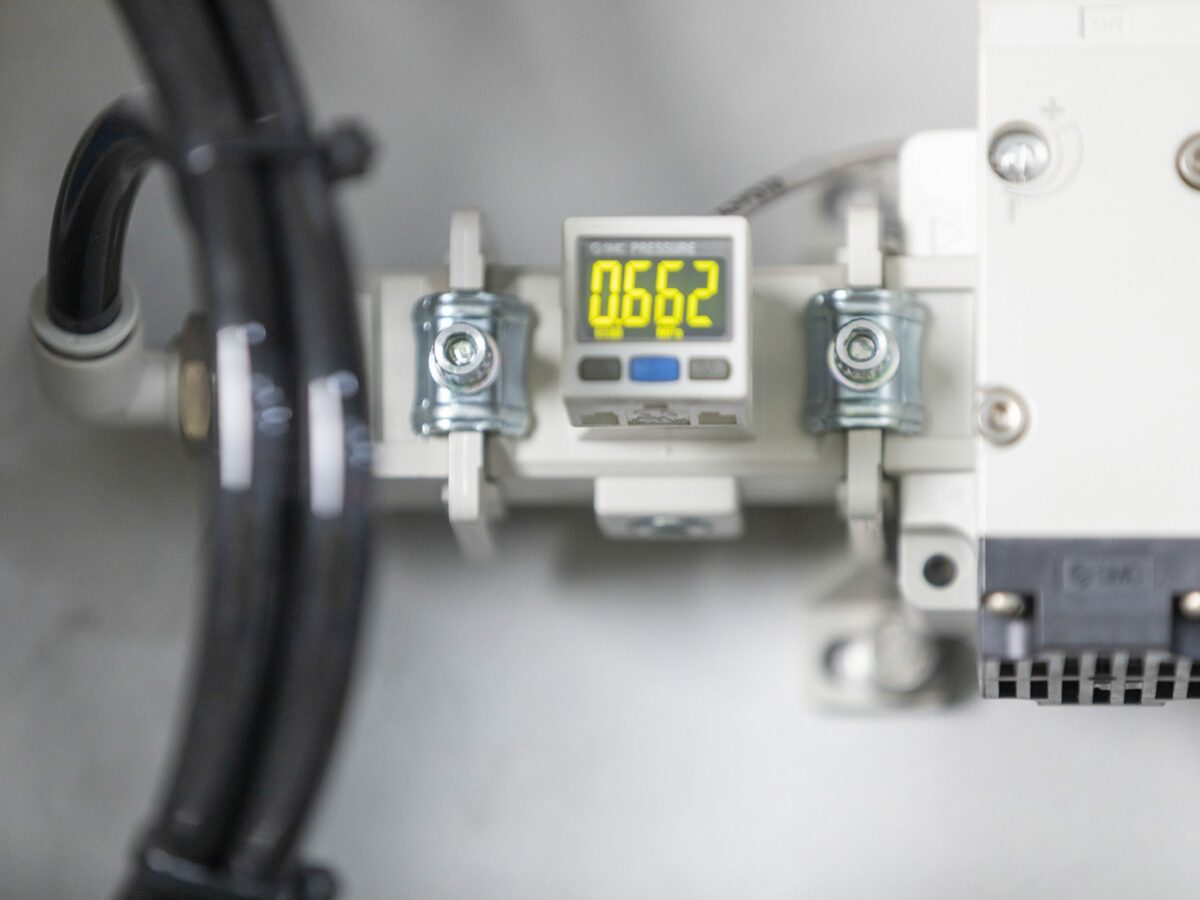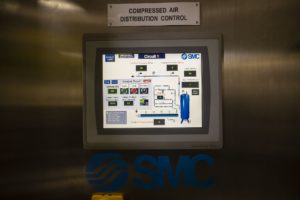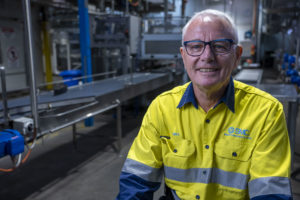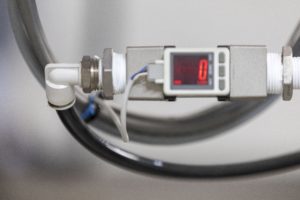@AuManufacturing’s editorial series – Saving through smarter energy use – is brought to you with the support of SMC Corporation.

ADVERTISING FEATURE
From humble beginnings in 1967, Fletcher International Exports has evolved into what can best be described as one of Australia’s greatest agribusiness success stories.
Founder Roger Fletcher established the business by purchasing sheep from sale yards and selling them on auction. While much of this private, family-owned business still revolves around lamb and sheep farming and processing, Fletcher has since developed a range of high-quality co-products, ventured into grain exports, and has purchased a company-owned train to assist with logistics.
Fletcher operates from two facilities in Dubbo (New South Wales) and Albany (Western Australia); combined, these plants process up to 90 000 sheep per week. Speaking to the forces at play, Gabrielle Ryan, Project Manager at Fletcher, says the industry is privy to various interwoven and uncontrollable factors. “We face ongoing challenges around climate conditions, livestock supply fluctuations, international markets and currencies, competition, geo-political factors and increasing operating costs.”
 In addition, the notable increase in the average weight of a sheep carcass meant that Fletcher had to evolve to accommodate changing processing demands. Explains Gabrielle: “The more kilograms per animal, the more meat needs to be processed, packaged and refrigerated which in turn requires investment in additional capacity. Adding to this is the rise in ‘quick serve’ restaurants and changes to portion sizes.”
In addition, the notable increase in the average weight of a sheep carcass meant that Fletcher had to evolve to accommodate changing processing demands. Explains Gabrielle: “The more kilograms per animal, the more meat needs to be processed, packaged and refrigerated which in turn requires investment in additional capacity. Adding to this is the rise in ‘quick serve’ restaurants and changes to portion sizes.”
To accommodate this, the company expanded and upgraded our facilities in terms of processing machinery, chilling, and refrigeration plants – all whilst keeping overheads front of mind.
Energy Efficient Upgrades
Naturally, energy saving is a key driver for a progressive company like Fletcher and therefore working smart, mindfully and ethically remains top priority. “Our Dubbo plant is 32 years old, and we have spent the past few years identifying and analysing where we can improve on energy savings and enhance processes,” explains Gabrielle. “We had to renew our strategy and vision and invest to make a real change. Once we started seeing results, we wanted to find more ways to reduce our energy consumption.”
Fletcher turned to SMC Corporation Australia New Zealand (ANZ) to help them along their energy saving journey. SMC has spent years cultivating a customer-centric business where solutions are developed around customer needs – rather than the other way round.
Bill Blyth SMC Energy Conservation Group Manager heads up the energy saving task team and explains that they work closely with customers to find sustainable solutions based on exact requirements. “More than ever, solutions need to be efficient. Efficiency keeps us competitive.”

Bill Blyth, SMC Energy Conservation Group Manager
Most of the work was focused around analysing and updating existing factories and processes.
Speaking to the partnership, Bill says SMC has been collaborating closely with Fletcher’s for the past years to help bring their energy saving vision to life. “From our early discussions, it was clear that Fletcher’s wanted to lead the way in terms of efficiency. We knew that we were in it for the long-haul and that our vision wouldn’t be achieved overnight.”
He adds that every change requires resources and funding. “SMC worked closely with the team on site to understand the most cost-effective approach and to establish a plan that would see improvements introduced in an efficient and cost-effective way. In addition, SMC worked closely to support Fletcher’s with accessing Government funding for energy reduction projects.”
Realising Savings
Mick Toovey, Maintenance Manager at Fletcher worked closely with SMC throughout the two-year process. “Compressed air is costly,” he says. “SMC conducted a full audit on our air systems which gave us further insights into possible savings. In fact, our air compressor is now down from a 165kW compressor to a 110kW compressor following the improvements we have made.”
Mick says the savings have been substantial. “We have saved around $65 000 per annum on our energy bill!”
Best of all, Fletcher has continued to increase their production without compromising on their bottom line.
Bill says: “While the ultimate value lies in the bottom line, it really is about working smarter to support the maintenance and operation teams. Fletcher is committed to providing a cleaner and greener footprint both locally and globally, and to sustain this. This makes it an ongoing project of continuous improvement.”
“SMC energy saving components are embedded into the site processes at all levels, supported by a site maintenance team that is committed to retaining the efficiencies. We have also installed Air Management Systems (AMS) across the site to ensure energy efficient compressed air consumption as the plant grows.”
 Components installed include: EX600 Ethernet manifolds and sensor interfaces, Many standard ISO air cylinders and fit for purpose; MGPM, CG1, CG5 and CS1 air cylinders, including specially (Australian) designed guided rodless cylinders, air preparation, flow and pressure monitoring, vacuum components, rod lock cylinders for precision positioning, analogue cylinder position sensing, SY valve manifolds and proportional control valves and smart valve positioners. These are standard SMC products but when used in the right combination and when correctly selected and configured to each application, they become powerful energy saving tools within the business.
Components installed include: EX600 Ethernet manifolds and sensor interfaces, Many standard ISO air cylinders and fit for purpose; MGPM, CG1, CG5 and CS1 air cylinders, including specially (Australian) designed guided rodless cylinders, air preparation, flow and pressure monitoring, vacuum components, rod lock cylinders for precision positioning, analogue cylinder position sensing, SY valve manifolds and proportional control valves and smart valve positioners. These are standard SMC products but when used in the right combination and when correctly selected and configured to each application, they become powerful energy saving tools within the business.
Speaking to project highlights, Gabrielle says: “A highlight was the installation of metering across the site. This was a huge job, but it now allows us to understand our plant’s inner most workings in real-time. To give you an example, we installed over 30 water meters across site during the peak of the drought when our town’s water supply was sitting well below 1%. The metering enabled us to slash water use by 30% because we understood how and where it was being used. We now look at energy saving holistically and consider all aspects of the plant for potential savings.”
Gabrielle was pleasantly surprised about the scale of energy efficiency during this project. “I don’t think we understood just how much we could improve coming into this. From fixing leaks, to installing air booster systems and introducing zoned pressure and flow control systems, our compressor load has been dramatically reduced. As the utility price continues to rise, and our production output follows suit, we have a responsibility to continue improving our energy footprint.”
The new approach has put Fletcher in a strong position to cope with rising costs and increasing global competition. The company exports over 95% of its produce to over 90 countries and sees more developments on this front in future.
Project Savings in Summary
Percentage savings:
Some additional value added through the improvements and initiatives included:
@AuManufacturing’s editorial series – Saving through smarter energy use – is brought to you with the support of SMC Corporation.